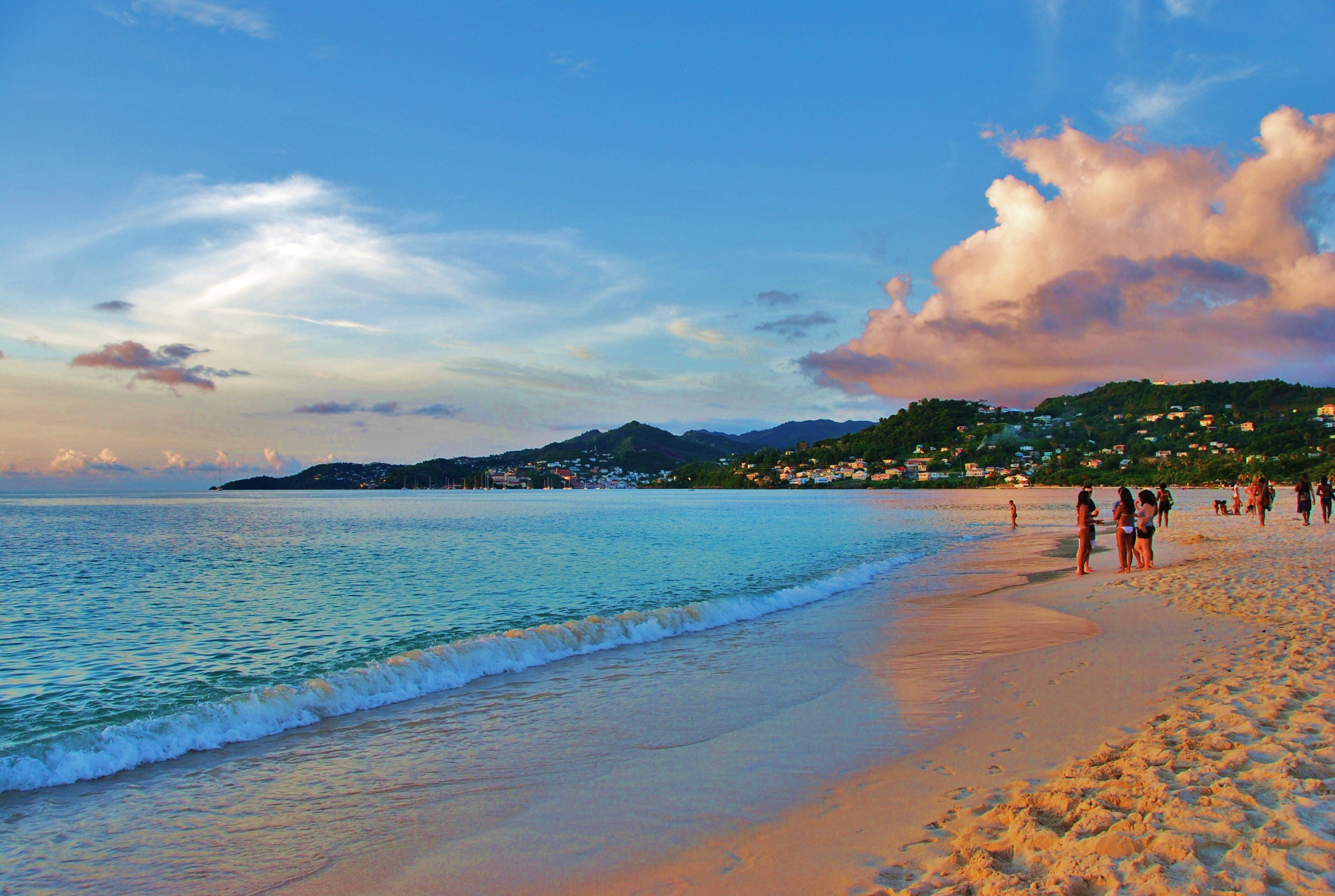🇬🇩map Grenada [Overview]

Grenada, known locally in English as Grenada, is a small island country in the southeastern Caribbean Sea, just north of Trinidad and Tobago and close to the shores of Venezuela. It’s the main island in a three-island state that also includes Carriacou and Petite Martinique, all fringed by green hills, spice trees, and calm bays. The population is just over one hundred thousand people, which gives the whole country a friendly, village-like feel even in the capital, St. George’s. The nickname “Spice Island” isn’t just marketing; nutmeg, cinnamon, and cloves scent the air after rain, and you’ll see whole nutmeg seeds hanging from rearview mirrors like good-luck charms.
Travelers find Grenada easy to settle into, especially if you like a relaxed pace and warm community life. English is the official language and the currency is the Eastern Caribbean dollar, which is shared with several neighboring nations, making regional travel straightforward. Flights link St. George’s to hubs like Miami, New York, Toronto, and London during high season, and frequent ferries connect the sister islands. The vibe is Caribbean through and through—colorful wooden houses, waterside fish fries, and impromptu cricket games at sunset—but there’s also a practical, get-it-done streak you notice in small businesses and co-ops that keep the economy humming.
Economy
Grenada’s economy leans on services, with tourism at the center—think boutique hotels, dive shops, yacht services, and restaurants that hire both locals and expats. Agriculture still matters: nutmeg, cocoa, mace, fruits, and root crops supply local markets and exports, and you’ll see small family farms inland. There’s also a growing education and medical services presence, anchored by an international university that brings in students, visiting faculty, and related jobs. Creative microbusinesses—from spice-blend makers to eco-guides—are common, and remote workers find solid niches in consulting, design, and IT.
The island’s natural resources are its fertile volcanic soil, rich coastal fisheries, and a marine environment that supports sailing and diving. Internet connectivity has improved, with fiber in urban areas and decent mobile data, though reliability can vary outside towns. Grenada belongs to the Organization of Eastern Caribbean States and uses the Eastern Caribbean Central Bank, adding financial stability and easy movement around the region. It maintains close ties with CARICOM members and benefits from tourism links to North America and Europe, so you’ll meet entrepreneurs who split time between St. George’s, Barbados, and Miami, bringing ideas and investment back and forth.
Culture
English is the main language, and you’ll hear Grenadian Creole English in daily conversation—musical, playful, and full of local expressions. Most people are of African descent, with communities of mixed heritage, East Indian, and smaller European and Middle Eastern families reflecting centuries of migration and trade. The island’s story includes Indigenous Kalinago roots, French and British colonial eras, and a post-independence chapter that shaped strong civic pride and a lively cultural scene. That layered history lives in the food—roti shops next to bakeries selling cocoa tea buns—and in the music that spills from verandas: soca, calypso, reggae, and gospel.
Religion is predominantly Christian, especially Roman Catholic and various Protestant denominations, and churches double as social anchors. People are passionate about cricket, track and field, and sailing; weekends often end with a beach lime, a grill, and a debate about the best local hot sauce. Big moments on the calendar include Independence Day in February, the colorful Spicemas Carnival in August with its masquerade bands and steelpan, and Christmas into New Year’s, when the island fills with returning Grenadians. Visitors are welcomed into this rhythm easily—say good morning, try the oil down (the national dish), and you’ll quickly feel part of the neighborhood.
Maria
Maria is a bilingual travel writer and immigration consultant originally from Mexico City, with extensive
experience living and working across Latin America. She spent her early career as a journalist covering
cross-border migration and expatriate communities throughout Central and South America. Having personally
navigated complex visa processes in multiple countries including the United States and Spain,
Maria understands firsthand the challenges faced by Latin American professionals seeking international
opportunities.
Published: 2025-03-10